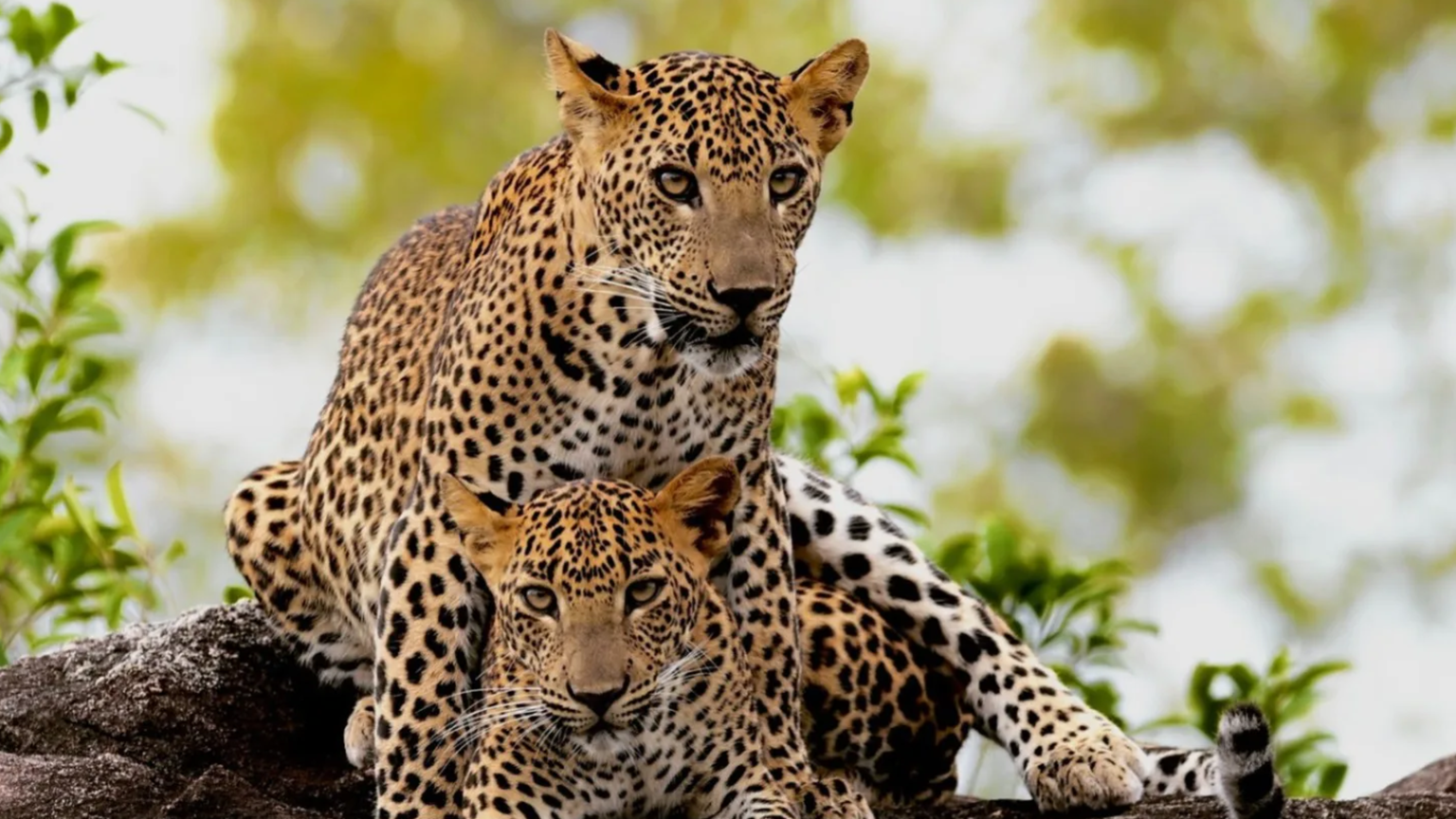On August 1, the day of the Sri Lankan leopard is observed – the unique subspecies of leopard, Panthera pardus kotiya, that is practically found in all parts of our little island.
Sri Lanka Leopard Day was established in 2021 as part of an initiative led by the Wildlife and Nature Protection Society (WNPS), along with the Department of Wildlife Conservation (DWC) and the Government of Sri Lanka. The primary motivation for Sri Lanka Leopard Day, as implied by its name, was to bring public attention to this iconic species and the pressures it faces for its very existence, both within and outside of protected areas.
Ecologically, a vital role is played by our leopards as an umbrella species, in the sense that the land under their occupancy harbors many more species, from prey to other mammalian wildlife, and conservation efforts aimed at the leopard’s protection can be utilized to safeguard not only the leopard but also the other less renowned biodiversity in its habitats. The leopard’s absence will also result in a cascading effect on the ecosystems of which it is a part. That is why the proper conservation of the leopard is doubly essential.
SRILANKANS & LEOPARDS
The Lankan relationship with leopards is both fascinating and troubling simultaneously. A significant threat to the future of the leopard is posed by habitat loss, and notably, fragmentation (leopards are wide-ranging creatures). Their natural habitats have been encroached upon by rapid deforestation, expanding agriculture, and urbanization, leaving them with fewer places to roam freely and find prey. As their homes diminish, not only are their numbers dwindled, but their interactions with humans are increased, creating more room for human-wildlife conflict.
As human populations grow, the competition for resources also grows. Leopards, in their quest for food, are sometimes preying on livestock (and pets), which sparks retaliation from farmers attempting to safeguard their livelihoods. These conflicts have escalated, resulting in fatal consequences for the leopards and the deepening of negative perceptions of them among local communities. Many leopards are killed by humans each year through snares and through inhumane trapping or deterrent methods like jaw bombs.
A significant threat to the leopard is posed by poaching and illegal wildlife trade. Leopard skin, bones, and other body parts are coveted on the black market, leading to the hunting of leopards. Additionally, the exotic pet trade poses further dangers to the leopard, disrupting their populations and diminishing their chances of survival.
In early 2022, the Multi-Regional Monitoring System for the Sri Lankan Leopard Project was set up by LOLC Holdings PLC and the WNPS in collaboration. This five-year project, built upon three primary pillars: ecological research, raising awareness, implementing conservation projects with the goal of gathering information on leopard distribution outside of protected areas, understanding the nature of human-leopard interactions, and identifying areas with human-leopard conflict. In 2022, 14 human-induced leopard deaths were recorded by the project, with many more likely going unrecorded.
The immediate response to the project’s findings over the past year is to double down on awareness and educate communities about the unintended consequences of using snares and the danger they pose to leopards and other wildlife.
LEARNING FROM THE WORLD AROUND US
Lessons about dealing with these fascinating animals are often learned by looking at how those around us manage them, as leopards, like Sri Lanka’s other remarkably charismatic wildlife species, the elephant, are not unique to Sri Lanka.
In honor of Sri Lanka Leopard Day, an interview was conducted by The Sunday Morning Brunch with Wildlife Conservation Society – India Director Dr. Vidya Athreya, an ecologist by training who has always been fascinated by interactions between different groups of species/organisms. Dr. Athreya is a member of the IUCN Cat Specialist Group and has been involved in formulating state and national-level policy guidelines on managing human-leopard conflict. Her research has contributed to increased awareness of large carnivores outside protected areas.
Much of her work revolves around big cats in India and their interactions with people, and this is part of what was discussed by Brunch – the lessons that can be learned from India in terms of managing leopards and the role of culture in conservation.
Dr. Athreya shared that she had always held a lifelong interest in big cats, though her study of leopards to the extent that she had delved into was somewhat serendipitous and driven by a period of particularly severe human-leopard conflict, during which more than 50 people were attacked over a two-year period in a cropland landscape.
“What these cats are doing in human areas really piqued my interest,” Dr. Athreya said, adding that in her years studying leopards, she had come to understand that the term ‘human-leopard conflict’ was something that needed to be moved away from collectively for meaningful leopard conservation to take place. “We must move away from conflict as a baseline. The IUCN Human-Wildlife Conflict and Coexistence Specialist Group (HWCCSG) has also deliberated on this, and it is evident that it is not conflict, but damage. Conflict is a much more serious issue, but looking at it as damage caused by wild animals changes how you view it too.”
Dr. Athreya also mentioned that there would always be some element of damage to human property and assets due to the adaptability of leopards. They can survive in almost any landscape, from arid to semi-arid to cropland to peri-urban areas.
She also pointed out that despite the existence of several peri-urban leopard populations in India (for example, Mumbai borders a national park, and leopards frequently venture into adjacent urban areas because of this), there have been very few attacks on people. “Humans are not their prey,” Dr. Athreya emphasized. “Conflict isn’t increasing. Livestock attacks will happen, but that is a separate issue.”
Some strategies used by India to minimize the impact of damage caused by leopards include the Indian Government providing ex gratia payments to those who lose livestock, which goes a long way in reducing anti-leopard sentiments among those who frequently deal with the damage caused by these animals.
Another chief strategy shared by Dr. Athreya with Brunch was the changing of mindsets, with researchers, media, and citizens working together to educate people about leopards and how they behave in order to avoid panic and promote coexistence with leopards in their home habitats. “Otherwise, people panic and remove the animal,” Dr. Athreya explained. “Many studies have shown that when you remove these animals and release them somewhere else, it creates greater conflict at the site of release, and the chances of attacks on humans near these release sites increase.”
CHANGING MINDSETS IN SRI LANKA
One of the aspects considered most inspiring by Dr. Athreya about the Lankan attitude toward leopards is their existing status as a wildlife emblem.
“It’s worth noting that Sri Lanka loves its leopards; they’re a wildlife emblem, and there is a lot of pride surrounding them, which is really nice,” she said, emphasizing that this attitude of appreciation for the leopard does lead to attempts for people and leopards to live together harmoniously. However, it was observed by her that the Sri Lankan context had more snaring than the Indian context.
“India is a huge country, and some places handle it better, while others don’t,” Dr. Athreya commented on the Indian human-leopard management landscape, but part of what makes handling human-leopard interactions easier is the issuance of detailed and proactive guidelines by the relevant ministries centrally.
“It could be very beneficial for Sri Lanka to have something similar at both the national level and the field level,” Dr. Athreya mentioned regarding how Indian conservation strategies could inform local ones. “Snaring appears to be a problem [in Sri Lanka], and if that can be reduced through cooperation and oversight, that would be excellent because an injured leopard is certainly not a good animal to have around.”
What drew Dr. Athreya to studying big cats is how fascinating they are. “A cat is a cat. They come in different sizes and coats, but they’re all essentially the same. The way they function is fascinating. Only after I started working on leopards did I realize how amazingly adaptable they are and how little we actually understand. I actually call them ghosts of the night because of how close they are to human presence without being seen.”
Lankan leopards, according to Dr. Athreya, are not too different from their Indian counterparts, primarily due to the diversity in the behavior of leopards resulting from their adaptability. For instance, some populations are nocturnal because that suits their habitats best. This adaptability of leopards also needs to be communicated to communities to alter their perspectives on these animals, aiming to identify the patterns of the leopards around them and subsequently work toward peaceful coexistence.
This is precisely why it is crucial to focus on both nature and culture. “Culture is a very powerful thing. It allows people to accept things or not accept things in a way that is less direct than a fleeting awareness session that says ‘Save the Leopard.’ Culture is what you grow up with and is also something you can influence in people.
“Interestingly, in Bombay, you have the warli community who have always revered leopards passing by and have rituals around the animals. They live in houses made of sticks and are not at all bothered by the leopards because they are culturally sensitive to them. However, people who do not have this cultural sensitivity, such as people living in large buildings who see leopards from seven or eight floors up, get scared and panic,” Dr. Athreya remarked, underscoring how culture can play a role in reducing the sense of fear surrounding leopards and promoting understanding.
SHARING THE KNOWLEDGE
Dr. Athreya’s professional study of leopards, driven by her fascination with them, has led to her being able to share her fascination with leopards with a Sri Lankan audience as the speaker for this month’s WNPS Public Lecture Series.
The Public Lecture Series is an acclaimed series of monthly talks by wildlife and conservation professionals aimed at informing the public about various flora and fauna and what can be done to conserve them. In honor of Sri Lanka Leopard Day, the August Public Lecture will be delivered by Dr. Athreya.
The lecture will involve the sharing of her experiences in learning about leopards. It’s all very new to her. She didn’t even believe that leopards visited croplands. The talk is primarily going to be her journey of realizing that with conservation, one starts with an animal but comes to understand that the solutions lie among people.









Very interesting subject, regards for putting
up.Raise range